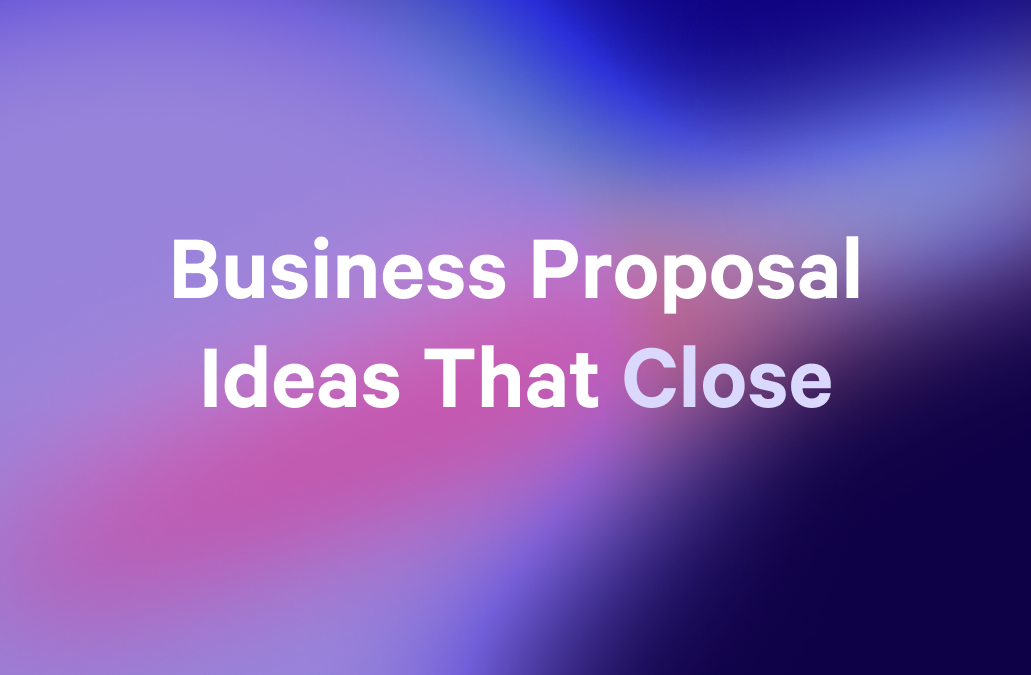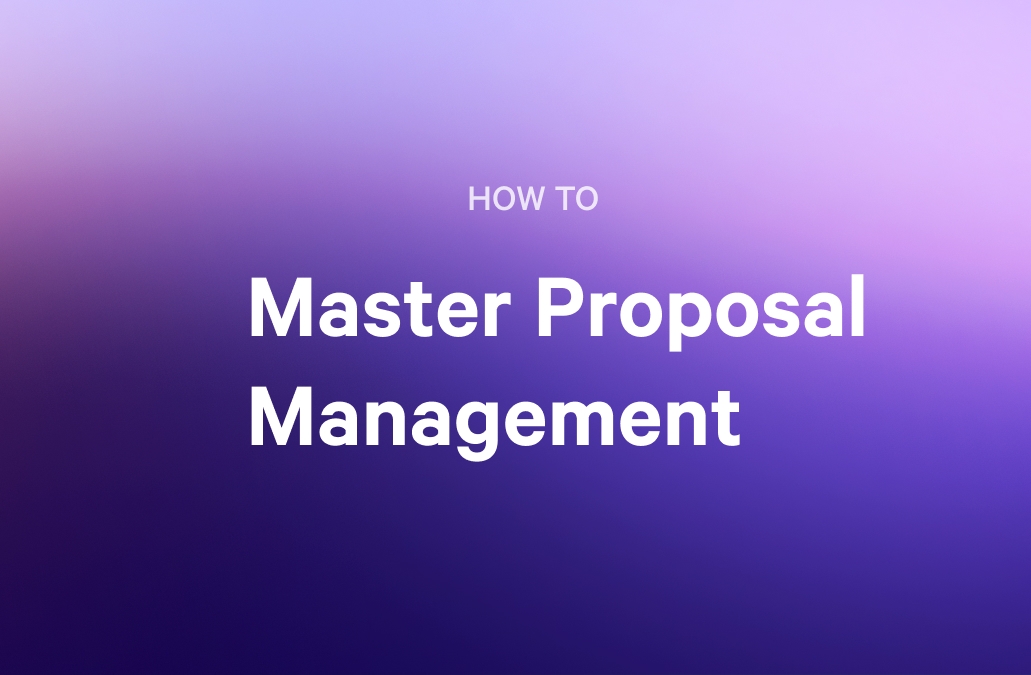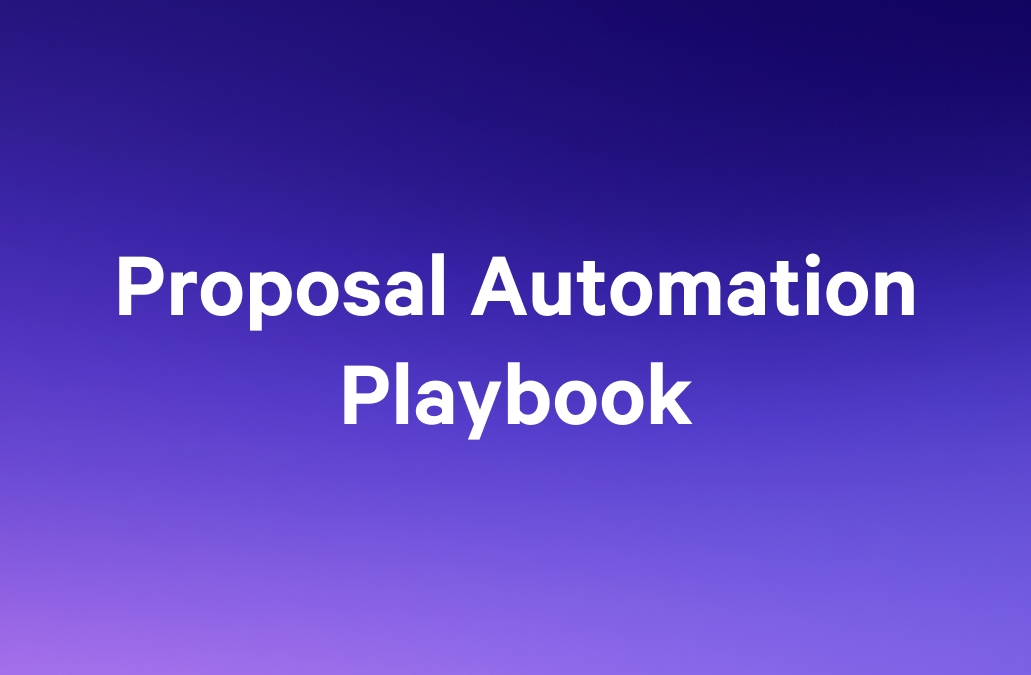Here’s one thing we all know: Most cleaning proposals are about as exciting as watching grout dry. But that’s exactly why yours has the chance to shine.
If you want to land more cleaning contracts (commercial, residential, post-construction, you name it), you’ve come to the right place.
This guide will show you how to write a cleaning service proposal that’s sharp, persuasive, and borderline delightful to read (yes, really). We’ll also show you how Qwilr can help you ditch the PDFs and send proposals that get signed faster than you can say “lemon-scented disinfectant.”
Key takeaways
- A cleaning proposal is more than a list of chores: it’s your chance to prove you’re not just another mop-wielding hopeful.
- Clarity and professionalism win the day: from a modern, personalized cover page to a sharply written executive summary and a brutally clear scope of work.
- Interactive, transparent pricing and flexible add-ons give clients control without the headache of back-and-forth emails.
- A winning proposal builds trust with real images, clear terms, and an easy-to-use digital experience that goes beyond static PDFs. By using Qwilr’s mobile-friendly, trackable, and signable proposals, you look like a professional business ready to go
What is a cleaning proposal, exactly?
A cleaning proposal is your official offer to clean someone else’s space. It outlines what you’ll clean, how often, for how much, and why you are over the dozens of other mop-wielding pros in town.
In theory, it’s a straightforward document. In reality, it’s your sales pitch, credibility builder, pricing guide, terms & conditions, and digital handshake, all rolled into one. It’s also your chance to say: “Hey, we’re not just some fly-by-night company with a mop and a dream. We show up. We clean up. We follow up.”
And if you do it right? You close the deal before the other guys have even figured out how to attach their PDF.
Types of cleaning services proposals
Before you go throwing together a one-size-fits-all document, pause. There are different types of cleaning proposals, and each one needs its own approach. Like matching the right vacuum attachment to the job, you need to tailor your proposal to the mess at hand.
1. Commercial cleaning proposal
For offices, coworking spaces, retail stores, etc. Think trash cans, break room microwaves, and suspicious conference room smells.
Must-haves: Frequency schedules, after-hours availability, liability insurance, and yes, your COVID-19 protocols (some clients are still checking).
2. Residential cleaning proposal
For homes, apartments, and occasionally the odd mansion with more bathrooms than sense. Often recurring weekly or biweekly.
Must-haves: Warm tone, customizable packages, pet policies (because nobody likes a surprise Rottweiler), and flexible timings.
3. Deep cleaning proposal
For when clients want everything. Baseboards. Window tracks. Behind the fridge. If you’re not sweating, it’s not deep enough.
Must-haves: Detailed scope, clear pricing (this ain’t your average tidy-up), and probably a waiver if you’re dealing with hoarders.
4. Post-construction cleaning proposal
Sawdust, drywall crumbs, paint splatters, and existential despair. Builders leave chaos; you restore order.
Must-haves: Heavy-duty services, debris removal, PPE mention, and often a phased cleanup structure.
5. Airbnb/short-term rental turnover proposal
It’s like residential cleaning, but on caffeine and unrealistic guest expectations.
Must-haves: Fast turnaround times, linen and laundry management, and possibly therapy.
What to include in a cleaning proposal (aka the non-negotiables)
These are the essential components of a cleaning proposal: the ones clients expect to see, and the ones they'll judge harder than their in-laws on inspection day. Nail these, and you're halfway to “Where do I sign?”
1. Cover page that doesn't scream ‘1997 Word Doc’
First impressions matter. If your proposal opens with Times New Roman, a pixelated logo, and a stock image of suds, your client has already closed the tab.
Here’s what your cover page should include:
- Your business name and logo: Ideally in high resolution.
- Client’s name and company: Because “Dear Sir or Madam” makes you sound like a scam email.
- Proposal title: Clear and professional - e.g., “Weekly Cleaning Proposal for JadeTech Inc.”
- Date of submission: So they know it's fresh, not something you found in your Drafts folder from 2022.
Qwilr tip: Use variables like {{ClientName}} and {{ProposalDate}} to automate personalization and avoid the horror of sending “Hi [insert name]” to someone named Susan.
2. Executive summary (But make it snappy)
Your executive summary is where you tell the client what you’re offering and why they should care, in 3–4 punchy paragraphs, max. It’s the hook, the pitch, and the "yes, we’ve done this before" moment.
Don’t:
- Ramble about your “passion for cleanliness since childhood.”
- Open with a quote about hygiene from Gandhi.
- List out your entire company origin story.
Do:
- Mention the type of cleaning (office, post-construction, etc.)
- Address any key needs you identified during earlier convos
- Highlight what makes your service actually better than the next quote in their inbox
Example:
At Grime Fighters Cleaning Co., we specialize in low-disruption, high-efficiency office cleaning. We’ve helped teams like yours maintain professional, sanitized spaces without interrupting productivity - or spilling mop water on critical IT infrastructure. This proposal outlines a customized weekly plan designed for your 3-floor headquarters in Sandton.
3. Scope of work (The “What’s Included” Buffet)
This is where vague promises go to die. If your scope of work says “general cleaning,” expect confusion, scope creep, and an email titled “Hi, this wasn’t done???”
Be painfully specific:
- List every room or area you'll clean
- Include specific tasks per space (e.g., vacuum carpets, sanitize desks, refill toilet paper)
- Clarify how often things happen (daily, weekly, monthly)
Pro Tip: Use tables to avoid chaos.
| Area | Task | Frequency |
|---|---|---|
Bathrooms | Clean sinks & mirrors, mop floor | Daily |
Lobby | Dust surfaces, empty bins | 3x/week |
Windows | Interior glass, first-floor only | Monthly |
Qwilr tip: Qwilr’s content blocks let you mix text, images, videos, pricing, and interactive elements like e-signatures, without ever leaving your proposal. It's like building a pitch deck, quote, and contract in one clean, scrollable page that keeps your client wanting to read more.
4. Schedule & availability
Don’t make clients guess when you’ll show up. If you say "sometime between 8 am and midnight," you’re just begging for chaos.
Spell out:
- Days and times you’ll clean
- Whether you’ll need after-hours access or a key
- How flexible you are for reschedules or last-minute messes
- Any exceptions (e.g., holidays, appointments)
Also smart: Include your plan for absences. “We’ll always send a backup cleaner if your regular team lead is unavailable,” builds confidence. “We’ll figure it out” does not.
5. Pricing (Be transparent)
This is the part everyone scrolls to first. If it looks like Sudoku, they’ll bounce.
Your pricing table should:
- Break down base services and their frequencies
- Clearly outline optional add-ons
- Show whether pricing is per clean, weekly, or monthly
Example:
| Service | Frequency | Price |
|---|---|---|
Standard Office Cleaning | 3x/week | $1,000/month |
Monthly Deep Clean | 1x/month |
|
Fridge Interior Clean | Optional |
|
Qwilr tip: Use interactive pricing to let clients add or remove extras and see totals update instantly. Bonus: It makes your proposal look like it was built in the 2020s. It also gives clients a sense of control over their budget - without you lifting a finger or sending a revised PDF for the tenth time. And when they see the value stack up in real time, those “optional” deep cleans suddenly may become “absolutely necessary.”

6. Company overview (Your time to humblebrag)
Now that they know what you do and for how much, reassure them that you’re not some rogue with a mop and a dream. You're an actual business. With people. And experience.
Include:
- Years in business (if it's impressive)
- Industries served (e.g., medical, education, residential)
- Certifications (eco-friendly products, OSHA compliance, etc.)
- Insurance & bonding info (because accidents happen, and you’re not dodging accountability)
- Social proof: testimonials, client logos, or “trusted by” badges if you’ve got them
Qwilr bonus: Embed a video walkthrough of your team in action or a quick intro from your founder. It’s like a handshake, but digital. Clients get to see the real people behind the brooms: friendly faces, not just a logo and a price tag. Plus, it builds instant trust and helps you stand out from the competition still hiding behind stock images and boilerplate bios.
7. Terms and conditions (Yawn, but still important)
This is the page nobody reads until there’s a dispute, then suddenly it’s the star of the show.
Don’t overcomplicate it. But do cover:
- Payment terms: Due on invoice, monthly retainer, 50% upfront, etc.
- Cancellation: Notice period, refund policy, fees for last-minute flakes
- Liability: What happens if a cleaner accidentally ruins the client’s favorite artisanal soap dish
- Renewals: Is this contract monthly? Quarterly? Eternal until the end of dust?
- Supplies: clarify who’s providing what. If you bring your own eco-friendly products, say so.
Qwilr tip: Use our agreements feature to attach a plain-text, formal terms and conditions agreement within your interactive proposal
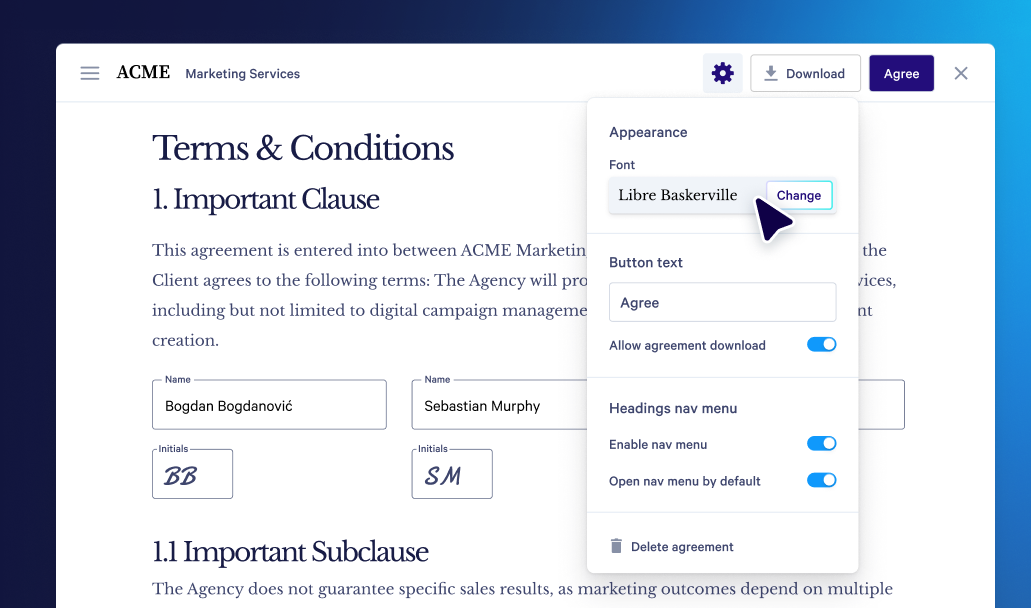
8. Call to action (Because “Let Us Know” is lazy)
The end of your proposal is not the place to trail off into vagueness. It’s the place to land the deal.
Your CTA should:
- Reiterate the value (“Let’s get your office looking the way it should - with less mess, and less stress.”)
- Tell them what to do next (click, sign, book, pay, whatever you’re aiming for)
- Sound like a real person, not an underpaid chatbot
Example:
Ready to get started? Click "Accept Proposal" below and we’ll confirm your cleaning schedule faster than you can say “crumb-filled keyboard.”
With Qwilr, clients can accept, eSign, pay, and even book your time on the spot. No back-and-forth, no dusty attachments, no confusion. Just clean (literally and figuratively).
Qwilr Pay lets your clients pay directly from the proposal: no awkward follow-ups, no lost invoices, just signed, sealed, and paid in one smooth click.
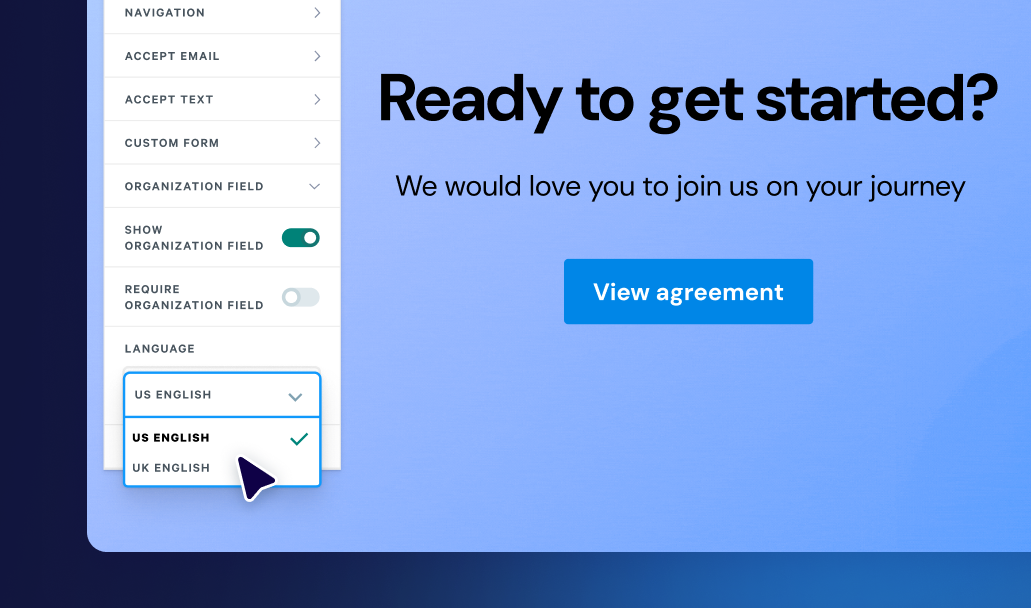
Cleaning proposal tips that’ll actually help you win
Because generic advice like “be professional” is, frankly, useless.
These are the things that separate winning proposals from the ones that get ghosted:
Tailor each proposal like you’re writing a love letter
Ctrl+C, Ctrl+V is not a strategy—it’s a red flag. Clients can quickly sniff out a templated proposal. If your proposal opens with “Dear [INSERT CLIENT],” just go ahead and toss it now.
Tailoring doesn’t mean rewriting your entire document from scratch. It means tweaking key elements:
- Mention the client’s industry (office, Airbnb, retail, etc.).
- Acknowledge any unique cleaning challenges (“high-traffic lobby,” “pet-friendly household,” “post-construction site that looks like a glitter bomb went off”).
- Suggest a service cadence that fits their real-world schedule (“We know weekend turnovers are tight, so we can be in and out before the next guests check in.”).
Even adding one specific line: “We’ve helped similar coworking spaces like Pine & Iron maintain spotless shared kitchens without interrupting member work hours” shows that you’ve done your homework and aren’t just flinging quotes at the wall.
Ditch the jargon
Unless your client has a background in industrial sanitation (spoiler: they probably don’t), “alkaline degreasing with dwell time optimization” sounds more like a science experiment than a cleaning plan.
Here’s the deal: you’re not trying to impress a panel of chemical engineers. You’re trying to reassure a busy human that you know how to remove the grime from under the microwave without torching the enamel.
Instead of this:
“We perform hot water extraction with advanced soil suspension pre-treatment.”
Try this:
“We deep-clean carpets using steam and eco-safe products that lift dirt from the base of the fibers, so no weird smells or residue.”
Translation: clarity wins trust. Confusion sends your proposal to the digital bin.
Use real images, not stock photo fantasies
You know the one: a smiling lady in heels casually dusting a shelf with a rainbow feather duster in perfect lighting. She’s not real. She doesn’t sweat. She definitely doesn’t haul industrial vacuums into a 5th-floor walk-up.
Swap that out for:
- Photos of your actual team (bonus points for branded shirts).
- Before-and-after shots of real jobs (because nothing sells like visible grime annihilation).
- Short videos showing your process, even if it’s just 15 seconds of someone power-scrubbing tile grout into submission.
Authenticity builds trust. Real images say, “We show up, and we get it done.” Stock images say, “We Googled ‘cleaning’ and hoped for the best.”
Upsell gently - Like a helpful human, not a late-night infomercial
We get it. You offer more than basic dusting. You’ve got carpet shampooing, fridge detoxing, high-reach cobweb-zapping magic. But if you present those add-ons like a greasy upsell in a fast-food drive-thru (“Would you like to add a window polish for just $89.99 more today?”), clients will feel ambushed.
Instead, frame your premium services as smart options that are clever to include:
“Many of our Airbnb clients add a monthly oven deep-clean to keep guest reviews five-star fresh - totally optional, but highly recommended.”
Or:
“Pet hair can sneak into every corner: our add-on includes detailed upholstery cleaning for a fur-free finish.”
With Qwilr, you can even let clients toggle these extras on and off in real time within the interactive quote block. No pressure, no hard selling. Just choices that help them feel in control (while you nudge them toward a higher-value contract).
Use Qwilr: Because static PDFs are out the door
Yes, we’re biased, but sending a PDF proposal in 2025 is like handing someone a VHS tape and asking them to rewind it.
With Qwilr, you can do so much, over and above everything we’ve mentioned above:
- Create beautifully branded, mobile-friendly proposals
- Embed calendars or booking tools so prospects can schedule a follow-up or site visit directly from the proposal.
- Track who viewed your proposal and when (so you can actually follow up instead of just crossing your fingers)
- Collaborate with your team in real-time right inside the proposal. Perfect for double-checking typos, pricing, or whether you really should include that joke about “mop envy.”
- Automatically personalize proposals with CRM integrations (like HubSpot, Salesforce, and more). Hello, custom proposals at scale.
- Use Qwilr’s ROI calculator to show clients exactly how much time, money, or grime they’ll save by hiring you.
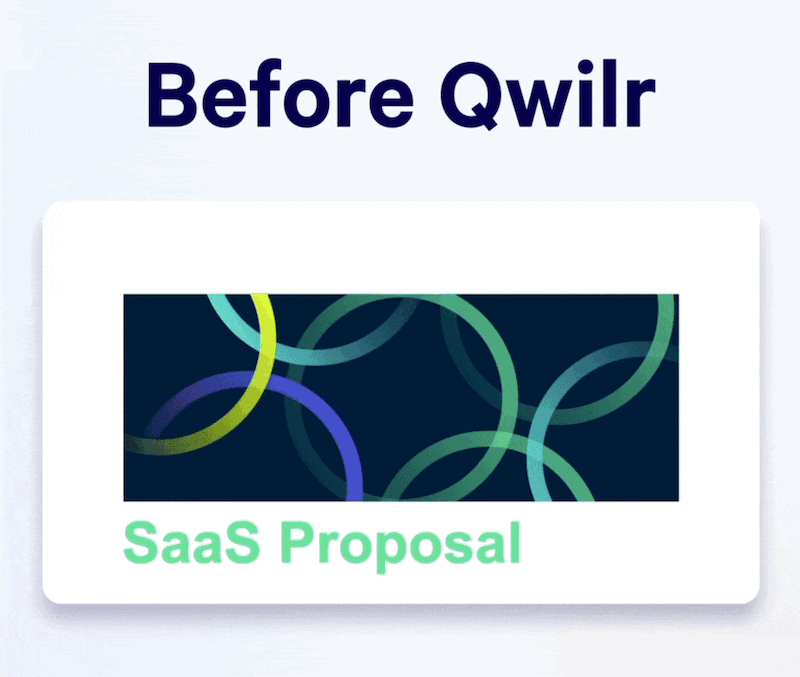
Bottom line: Qwilr makes your proposal look like you’re running a legitimate, modern business, not something cobbled together between bleach refills.
Qwilr’s Services Proposal Template helps you create stunning, mobile-friendly proposals that don’t just inform, they impress. Whether you’re offering cleaning services, consulting, design, or dog whispering, this template flexes to fit your brand and workflow (minus the formatting headaches!)
Your cleaning may be manual. Your proposals shouldn’t be.
You’ve got enough to do: mopping, vacuuming, scrubbing things people shouldn’t let get that dirty in the first place. Let Qwilr handle the proposal part.
Start your free trial now and turn more cleaning quotes into signed contracts, without breaking a sweat.
About the author

Brendan Connaughton|Head of Growth Marketing
Brendan heads up growth marketing and demand generation at Qwilr, overseeing performance marketing, SEO, and lifecycle initiatives. Brendan has been instrumental in developing go-to-market functions for a number of high-growth startups and challenger brands.
